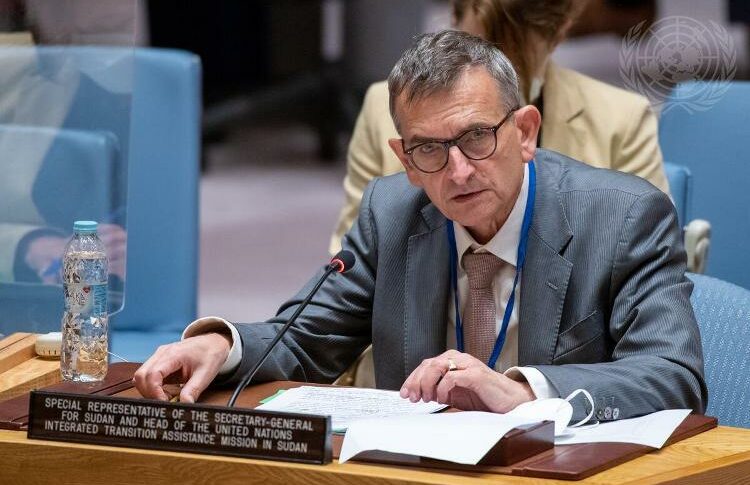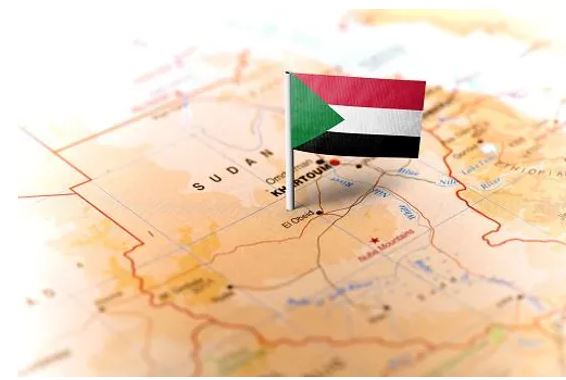Juba Peace Talks: Featuring The Conflict (1- Darfur)
17 October, 2019
Tulus city, South Darfur
KHARTOUM (Sudanow) - Eyes are these days turned towards the City of Juba, Capital of Southern Sudan, where the long-awaited peace talks between the government and rebel groups from Darfur, Nuba Mountains and the Southern Blue Nile districts are in progress since Monday.
The talks are sought to broker a lasting solution for the long struggle in some of the most bountiful and most beautiful regions of the country. The ultimate aim of the talks is to restore the rights of the peaceful citizens of those areas who were victimized by the ambitions of heartless, inhuman politicians.
In this opportunity, Sudanow gives reminders of general information about, and the root causes of the conflict in those areas:
Darfur: Geography and Demography
Darfur region is located in the Westernmost part of the Sudan, on an area of 510,000 square kilometers. The region borders three countries: Libya in the Northwest, Chad in the West and the Central African Republic in the Southwest.
The region extends from the Great Sahara in the North, down to the poor Savannah in the middle and the rich Savannah in the South. It is characterized with mountainous areas, mostly the Jabel Marra (or Marra Mountain) that rises high up to 3088 meters above sea level and that houses Darfur’s most fertile lands.

Administratively, Darfur is divided into five federal states: North Darfur State (with Alfashir as its capital), South Darfur State (capital: Niyala), West Darfur State (capital: Aljinaina), East Darfur State (capital: Adde’ain) and Central Darfur State (capital: Zalengi).
According to the 1993 census, Darfur’s population amounts to seven million, all of them Muslims.
Darfuris speak local languages in addition to Arabic. Darfur is inhabited by a lot of ethnic groups that can be divided into two categories:
Settled Tribes:
These inhabit rural areas such as the Fur, the Masaleet, the Zaghawa, the Dajo, the Tunjur, the Tama.
Nomadic Tribes:
These are unsettled livestock herding tribes that move from one area to the other in search of pasture and water for their livestock. These include the camel herding tribes like the Mahameed, the Mahriyya, the Bani Hussein, the Rezaigat and the Ma’aliya.
Economic Resources:
Darfur is endowed with lots of gum Arabic producing acacia forests. In addition, Darfur farming communities in the region’s southwest grow cotton and tobacco. Different fruit varieties and vegetables are grown in the Marra Mountain region with its Mediterranean climate. Some Darfuri regions grow sorghum, millet, wheat and others cereals.
Darfur is also endowed with a vast livestock herd, primarily camels, sheep and cattle. This vast animal wealth was ravaged by the drought that hit this area in the early 1980s.
In addition to agriculture and livestock, Darfur sits on unverified minerals and petroleum.
Causes of the Conflict in Darfur:
The conflict in Darfur is so complicated where environmental, ethnic, political and economic factors intersect, in addition to foreign interventions. Darfur region is inhabited by a number of ethnic groups, some of them of African origin and others of Arab descent.
The African ethnicities speak their own languages beside Arabic. The Arab tribes are usually on the move with their livestock. Most of the African tribes are settled farmers.
Conflicts used to erupt between the farmers and the pastoralists in times of drought ever since the 1950s. However, things used to return to normal upon the intervention of tribal chieftains from each side. Disputes had never departed from this narrow circle.
But the intensifying droughts and desertification in the 1980s, added to the increasing incidences of armed robbery had aggravated the struggles.
Wars in some neighboring countries had increased the flow of firearms into Darfur, thus encouraging the possession of these weapons by people from the two sides: the nomads and settled farmers.
The remoteness of Darfur from the country’s center and complaint from the marginalization of the region had prompted Darfuris to bitterly complain from the lack of development projects and the poor educational and health services.
Darfur activists had kept pressing Khartoum to give their region its share in power, wealth and development, until when these pressures culminated in the formation of the Sudan Liberation Movement and the Justice and Equality armed movements.
The two movements had declared the war against the central government, raising plain political slogans in 2003. In April that year, the rebels managed to occupy the City of Alfashir Airport for hours, pillaging some planes and arresting the commander of the Sudanese Air force.
That skirmish had given the armed groups a strong push after which they scored victories against the government troops. This had obliged the government to seek help from what came to be known as the Janjaweed forces to fight the rebels.
Because the Janjaweeds drew primarily from the pastoralist Arab tribes (the Baggaras), the struggle took an ethnic dimension.
The government had supported these fighters with money, armaments and political power, engendering the worst of violations: killings, village burning and rapes and the ensuing mass human exodus within and outside the region. This was dubbed by the rebel groups and international rights organizations as ethnic cleansing.
The Darfur issue then took an international dimension, with former president Omar Abbashir in 2009 accused of war crimes and crimes against humanity by the International Criminal Court (ICC) in the Hague and with a hybrid UN and African Union peacekeeping force deployed in Darfur.
Settlement Attempts:
The Sudanese Government had signed a number of peace accords with rebel groups. But none of those accords had managed to end the protracted warring.
Hope is renewed now for ending this strife for ever with the demise of the Bashir regime and the formation of the revolution’s new government.
In that drive the Darfur armed movements last September met with government officials in Juba, capital of Southern Sudan.
The ensuing Juba Declaration has tailored out measures for confidence building between the two sides as an initial step towards peace talks.
In this respect the two sides set up joint committees to shoulder certain tasks like the freeing of war captives, humanitarian issues and the cessation of hostilities.
The two sides also agreed upon negotiation tracks that address the nature of each of the regions involved in the conflict in Darfur, the Blue Nile, the Nuba Mountains and Eastern Sudan.
The Transitional Government has proved its seriousness to go forward along the road towards sustainable peace by launching the Higher Council for Peace under the chairmanship of the head of the Sovereign Council, Lt. General Abdelfattah Alburhan, the ministers of justice, federal government and three related experts. Part of this Council’s duties is also to draw general policies for addressing the root causes of the conflict.
E N D
YH/AS








